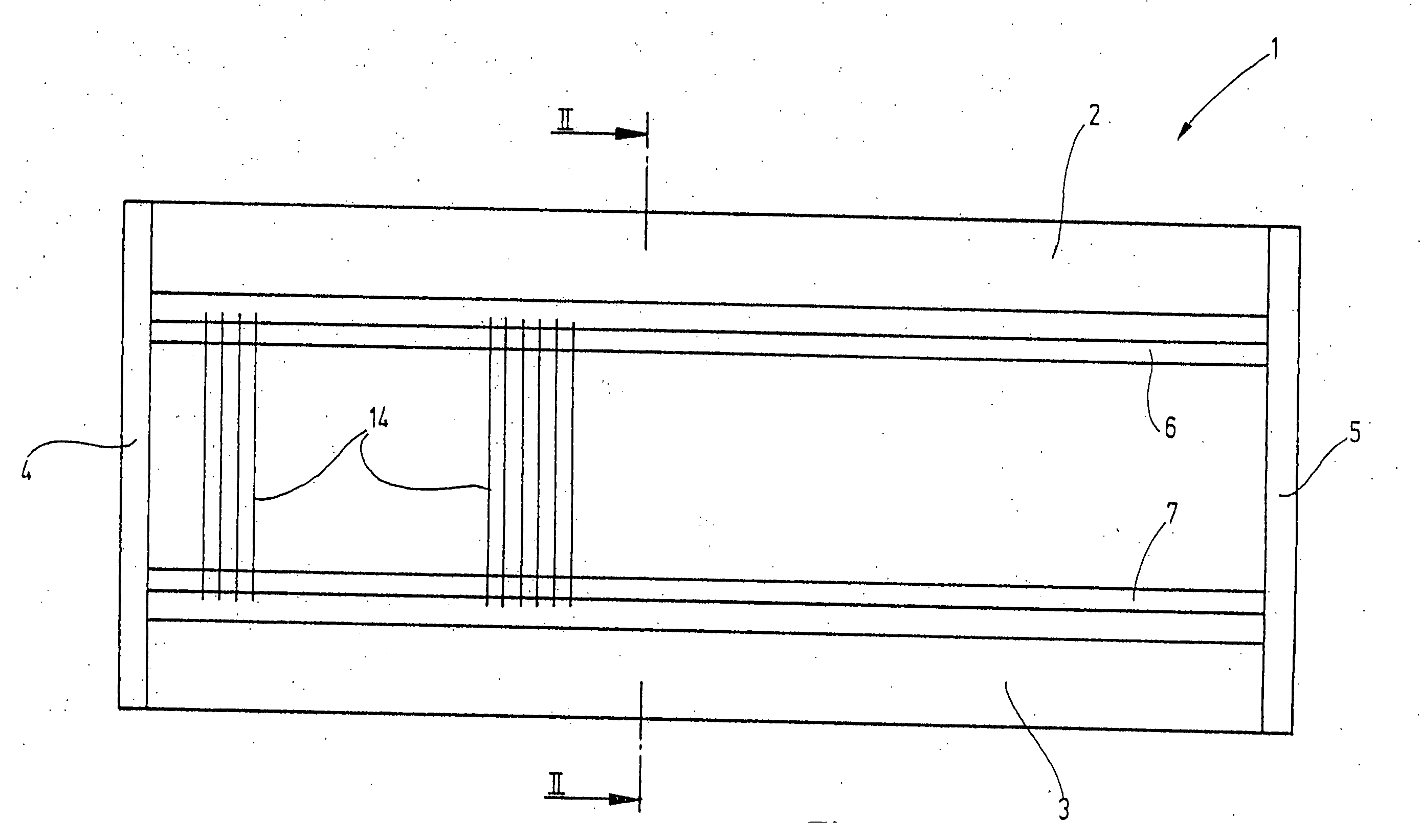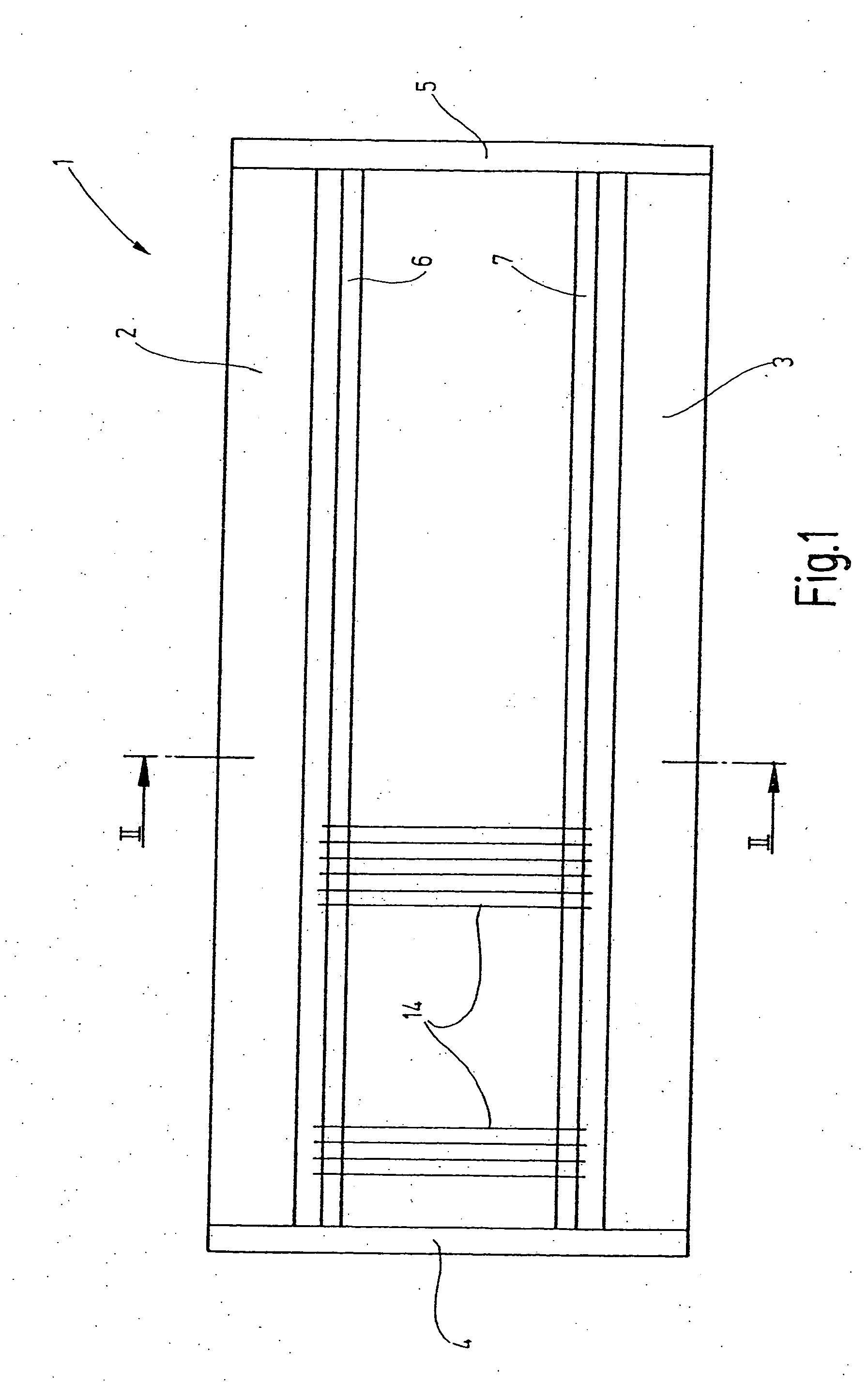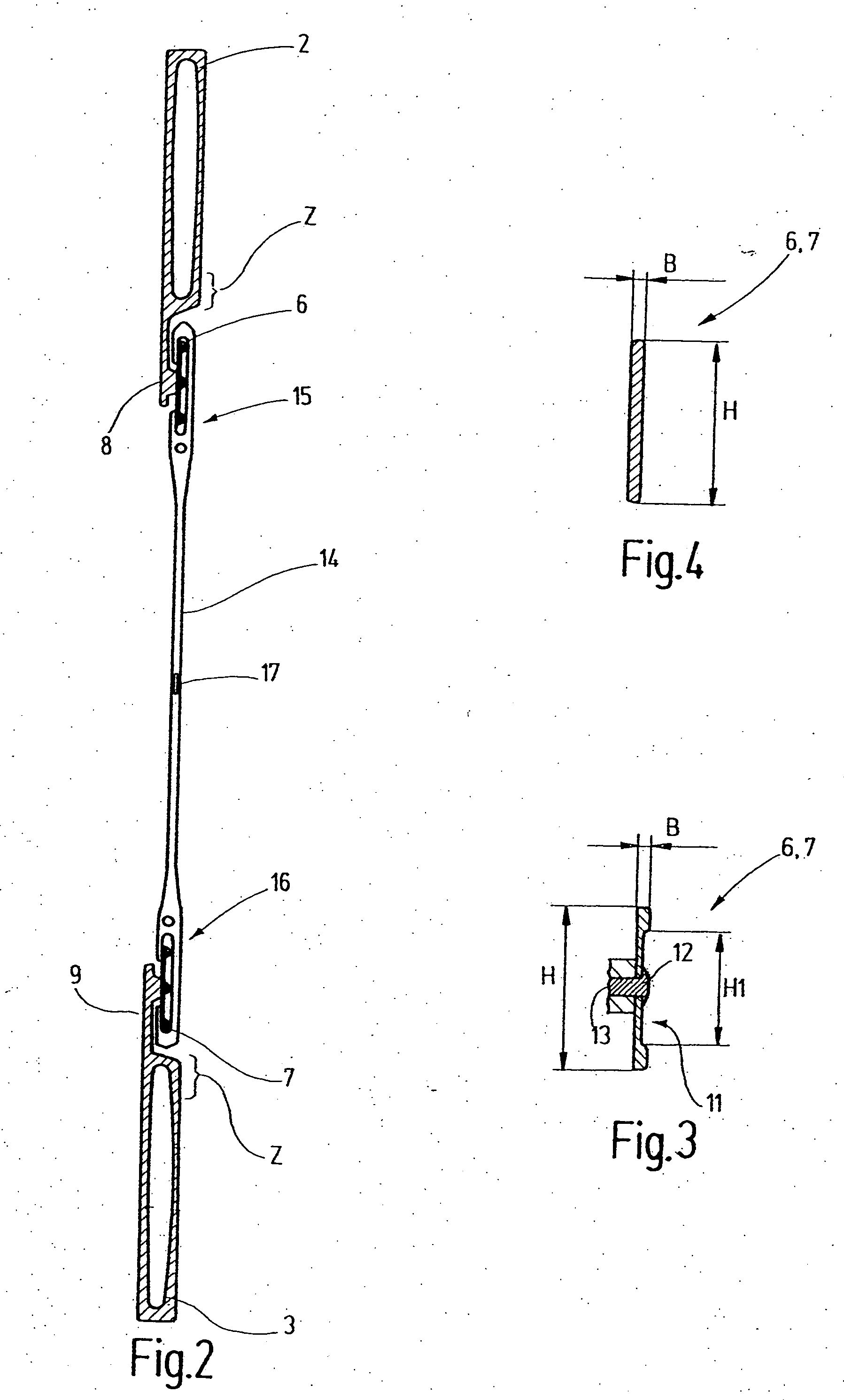Heddle with reduced play
a technology of reducing play and reducing load, which is applied in the field of heddle, can solve the problems of dynamic deformation that cannot be avoided entirely, high dynamic load on the heddle support rail and the heddle, etc., and achieves the effect of reducing mass, reducing the force that is required for acceleration and braking, and reducing siz
- Summary
- Abstract
- Description
- Claims
- Application Information
AI Technical Summary
Benefits of technology
Problems solved by technology
Method used
Image
Examples
Embodiment Construction
[0024] In FIG. 1, a heddle shaft 1 is shown, which has an upper shaft rod 2 and a lower, second shaft rod 3, disposed parallel to it at a distance. The ends of the shaft rods 2, 3 are joined together by side struts 4, 5, forming a firm rectangular frame. One heddle support rail 6, 7 each is retained on the upper and on the lower shaft rod 2, 3, as can also be seen from FIGS. 2 and 3. To that end, the shaft rods 2, 3 have extensions 8, 9, which support the heddle support rail 6, 7. As FIG. 3 shows, the heddle support rail is preferably embodied in the form of a flat steel profile, whose breadth B is preferably at most 1.5 mm and whose height H is preferably 18 mm. The cross section is approximately rectangular; the heddle support rail 6, 7 is provided with a rounding on its top side. It may be provided, as FIG. 3 shows, at selected points with an indentation 11, whose height H1 is at most 14 mm and whose length (perpendicular to the plane of the drawing) is for instance 11 mm. As a r...
PUM
 Login to View More
Login to View More Abstract
Description
Claims
Application Information
 Login to View More
Login to View More - R&D
- Intellectual Property
- Life Sciences
- Materials
- Tech Scout
- Unparalleled Data Quality
- Higher Quality Content
- 60% Fewer Hallucinations
Browse by: Latest US Patents, China's latest patents, Technical Efficacy Thesaurus, Application Domain, Technology Topic, Popular Technical Reports.
© 2025 PatSnap. All rights reserved.Legal|Privacy policy|Modern Slavery Act Transparency Statement|Sitemap|About US| Contact US: help@patsnap.com



